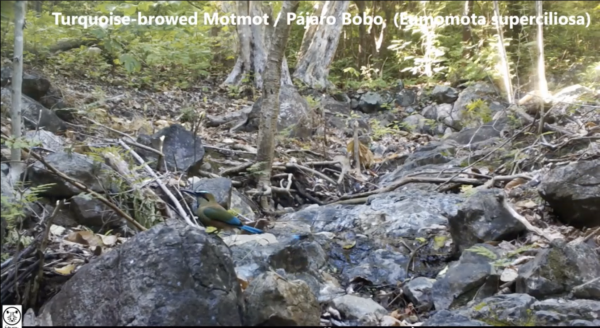Monday, July 29th, 2019.
In this Daily: More Footage of Costa Rican Animals as Wildlife Monitoring Continues
The most recent compilation of animal sightings from the wildlife monitoring project in the nature reserve has officially been released, and you can watch by clicking right here. There’s an interesting blend of some familiar sightings from the past round -- including ocelots, pumas, armadillos, tayras, white-tailed deer, and more -- as well as quite a few new animals of Costa Rica, like a small group of white-throated magpie jays and one brilliantly-framed appearance from a turquoise-browed motmot.
The frequency and diversity of these sightings in just two rounds of footage is a very positive sign for the project, which we talked about last time, and speaks to the biodiversity of the nature reserve as well as its ability to support life.
A Blend of Old and New Sightings of Costa Rican Animals | Why This is a Good Thing
There are a few reasons why this second round of video is a good sign for the health of the Las Catalinas nature reserve. First, the continued frequency of sightings is a strong indicator that the nature reserve is capable of supporting a large and healthy ecosystem filled with animals. More points of data will continue to be collected, and after only one month of monitoring it can be difficult to draw any cohesive conclusions. However, the early signs are that the capability to support life -- including large mammals like white tailed deer and high-order consumers like pumas and coyotes -- is strong in the nature reserve.
The second reason why this video is a good indicator of the health of the Las Catalinas nature reserve is the number of new animals of Costa Rica that were captured on film. The healthiest and most vibrant natural ecosystems have not only a quantity of animals, but also a diversity of species. Having many different species speaks to a wide variety of niches available to occupy, which is only possible in rich and biologically strong environments. For example, the world’s healthiest ecosystems can have thousands upon thousands of species of animal and plant life, each with complex interconnected relationships.
The Agroforestales team will continue to work with Guanacaste Wildlife Monitoring to collect footage of these animals, with each passing week revealing more species and more valuable information on the health of our wildlife reserve.
